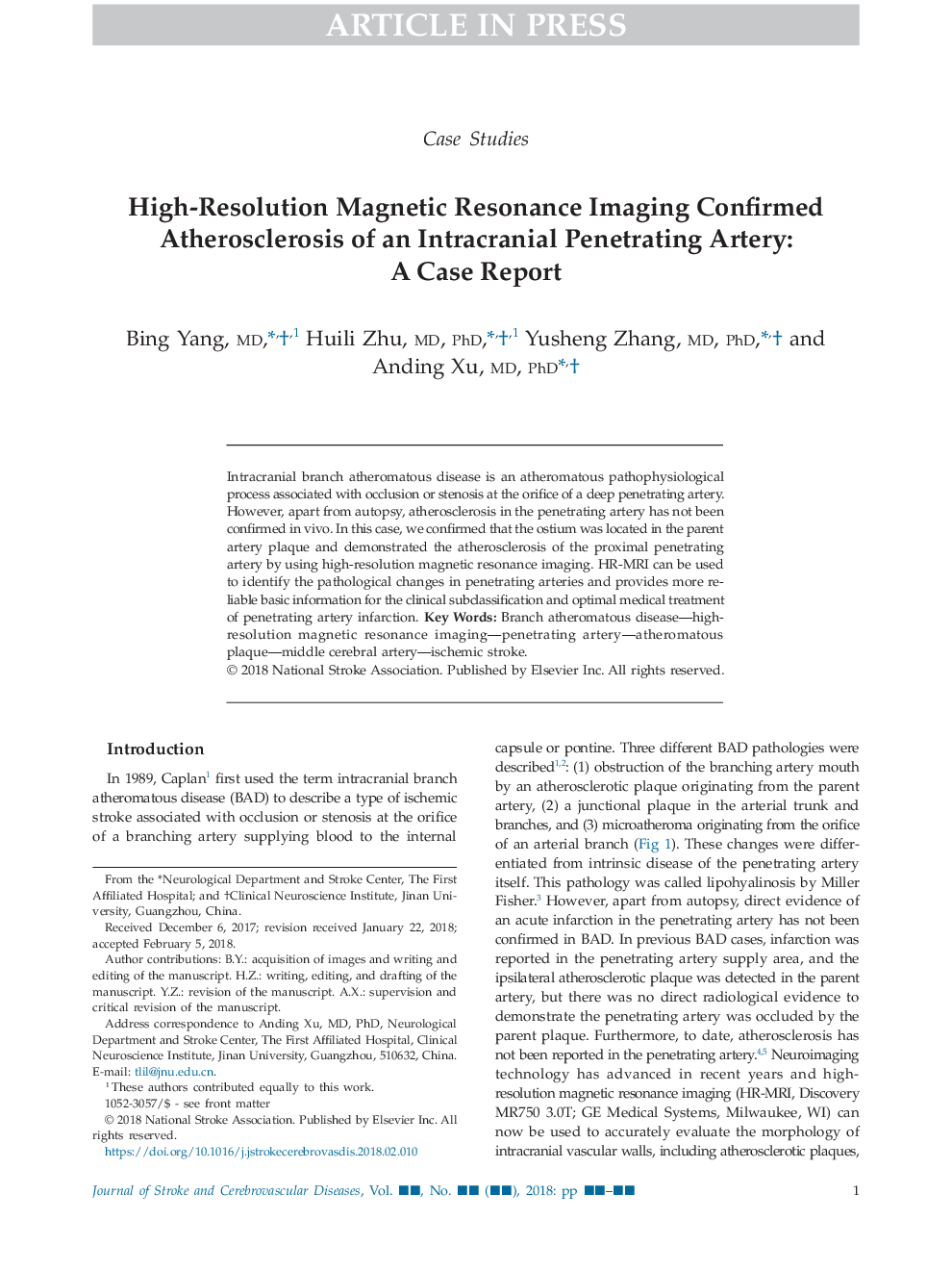| Article ID | Journal | Published Year | Pages | File Type |
|---|---|---|---|---|
| 8594743 | Journal of Stroke and Cerebrovascular Diseases | 2018 | 4 Pages |
Abstract
Intracranial branch atheromatous disease is an atheromatous pathophysiological process associated with occlusion or stenosis at the orifice of a deep penetrating artery. However, apart from autopsy, atherosclerosis in the penetrating artery has not been confirmed in vivo. In this case, we confirmed that the ostium was located in the parent artery plaque and demonstrated the atherosclerosis of the proximal penetrating artery by using high-resolution magnetic resonance imaging. HR-MRI can be used to identify the pathological changes in penetrating arteries and provides more reliable basic information for the clinical subclassification and optimal medical treatment of penetrating artery infarction.
Keywords
Related Topics
Health Sciences
Medicine and Dentistry
Clinical Neurology
Authors
Bing MD, Huili MD, PhD, Yusheng MD, PhD, Anding MD, PhD,
